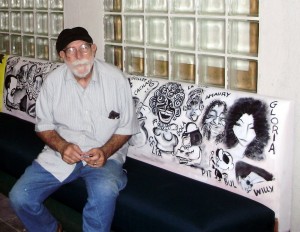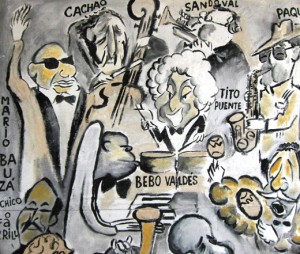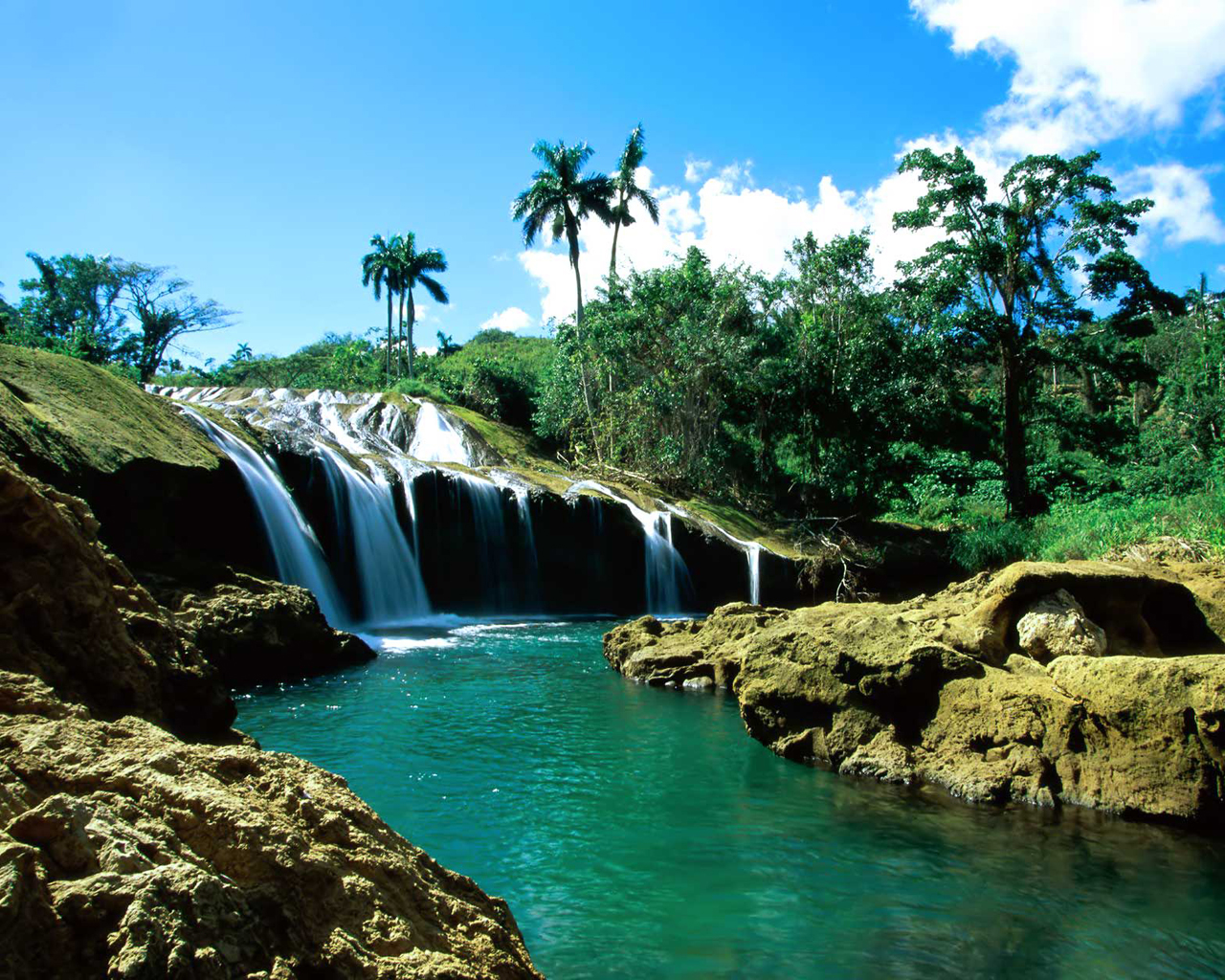Aristide is one of those characters who has accented Miami’s “Cubania” for the last five decades. He is clearly a fish out of water, a natural Havana cultural mainstay or Habanero, as we call it, transported to Miami due to the intransigence of a dictatorship.
In fact, Aristide, whose real name is Aristides Pumariega is like many Cuban artists, writers and filmmakers who have made their way to exile over the last 10 to 15 years. They are exemplars of the unfulfilled promises of the utopian revolution. Like many of his generation, Aristide (he signs without the “s” at the end) was a budding artist in search of a purpose and a career when Fidel Castro entered Havana in January 1959. Opportunity was seemingly in bloom that winter especially for upstarts and apprentices like Aristide, given that many of the entertainment, business, and academic establishment were leaving Cuba fearing Castro’s erratic behavior and incongruent rhetoric.
Cuba has a long, distinguished history of cartoonists and graphic artists dating back to the end of the 19th century and highlighted by the work of Antonio Prohias, the creator of works such as Spy vs. Spy, which gained notoriety on the pages of Mad Magazine. Prohias was one of those who fled Castro’s tyranny leaving a vacuum for a younger, less-proven generation which included the likes of Aristide who rather quickly ascended to the position of lead cartoonist in some of Cuba’s most important publications, including the internationally acclaimed, Bohemia magazine.
Aristide went on to create one of the revolution’s most noted characters, Subdesarollo Perez (Underdevelopment Perez), a typical Havana know-it-all whose observations of the ever changing society were humorous to the regime until the character began poking fun at the government’s failures. One of those failures was during the sugar crop of 1970 where the whacko dictator promised to reach the 10-million-ton mark — and, as one would suspect given the paltry track record, it failed.
Subdesarollo Perez’s ridicule of the fiasco was not taken lightly as Aristide was dismissed from his assignments and was placed in a work camp for two years to reflect on his cultural trespasses. Safe to say, Aristide’s art would never be recognized on the island again.
“Aristide, like many of the artists that are in my gallery, has withstood the worst of conditions. It is an honor to keep their art alive,” said Roberto Ramos, the owner of Cuba Ocho.
Nearly five decades after Subdesarollo Perez’s heyday in Havana, Aristide’s creations are exhibited in the heart of Little Havana — a testament to his artistic talent and perseverance and to the continuation of a long legacy of Cuban traditions like my cigar, the café we sipped and the music which Aristide’s caricatures honor.
Sources: MiamiHerald/JoeCardona/Excerpt/InternetPhotos/www.thecubanhistory.com
Aristide’s’ Pumariega: Cartoonist/ Arnoldo Varona, Editor
www.thecubanhistory.com
ARISTIDE ‘S’ Pumariega: Caricaturista
Aristide es uno de esos personajes que se ha acentuado en Miami “Cubanía” desde hace cinco décadas. Él es claramente un pez fuera del agua, un pilar natural de La Habana, cultural o Habanero, como lo llamamos, transportado a Miami debido a la intransigencia de una dictadura.
De hecho, Aristide, cuyo verdadero nombre es Arístides Pumariega es como muchos artistas cubanos, escritores y cineastas que han hecho su camino al exilio en los últimos 10 a 15 años. Son ejemplos de las promesas incumplidas de la revolución utópica. Como muchos de su generación, Aristide (que firma sin la “s” al final) fue un artista en ciernes en busca de un propósito y una carrera, cuando Fidel Castro entró en La Habana en enero de 1959. La oportunidad fue aparentemente en flor que el invierno especialmente para los nuevos ricos y los aprendices como Aristide, dado que muchos de los espectáculos, los negocios y el establecimiento académico se iban Cuba por temor a un comportamiento errático de Castro y la retórica incongruente.
Cuba tiene una historia larga y distinguida de artistas y dibujantes gráficos que datan de finales del siglo 19 y destacó por el trabajo de Antonio Prohias, el creador de obras como Spy vs Spy, que se hizo famoso en las páginas de la revista Mad . Prohias fue uno de los que huyeron de la tiranía de Castro deja un vacío para una más joven, menos probada generación que incluía la talla de Aristide que algo rápidamente ascendió a la posición de dibujante plomo en algunas de las publicaciones más importantes de Cuba, incluyendo la internacionalmente aclamada, Bohemia revista.
Aristide llegó a crear uno de los personajes más señalados de la revolución, Subdesarollo Pérez (Subdesarrollo Pérez), una Habana típico sabelotodo porque todas sus observaciones de la sociedad en constante cambio eran humorístico con el régimen hasta que el carácter comenzó burlándose de los fracasos del gobierno . Uno de esos errores fue durante la zafra de 1970, cuando el dictador whacko prometió alcanzar la marca de 10 millones de toneladas – y, como era de sospechar, dada la trayectoria miserable, que falló.
Ridículo Subdesarollo Pérez del fiasco no fue tomada a la ligera ya que Aristide fue destituido de sus tareas y se colocó en un campo de trabajo durante dos años para reflexionar sobre sus ofensas culturales. Es seguro decir, el arte de Aristide nunca sería reconocido en la isla de nuevo.
“Aristide, al igual que muchos de los artistas que están en mi galería, ha soportado la peor de las condiciones. Es un honor para mantener su arte vivo “, dijo Roberto Ramos, el dueño de Cuba Ocho.
Casi cinco décadas después de apogeo Subdesarollo Pérez en La Habana, las creaciones de Aristide se exhiben en el corazón de la Pequeña Habana – un testimonio de su talento artístico y la perseverancia ya la continuación de un legado de tradiciones cubanas como mi cigarro, el café que bebía y la música que honra Aristide caricaturas.
Sources: MiamiHerald/JoeCardona/Excerpt/InternetPhotos/www.thecubanhistory.com
Aristide’s’ Pumariega: Cartoonist/ Arnoldo Varona, Editor
www.thecubanhistory.com





